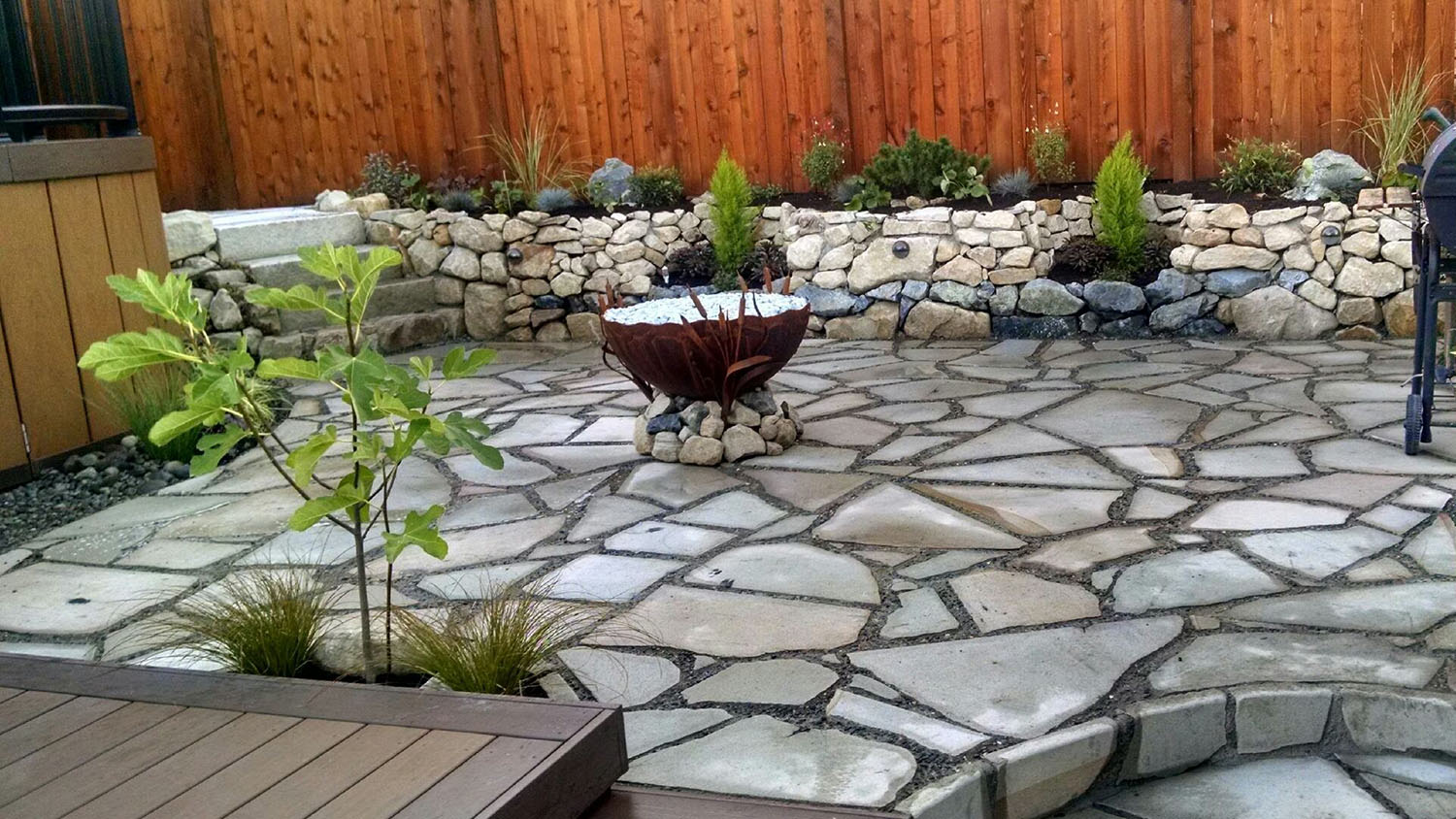
A flagstone path and patio are parts of a building that serve different purposes. While a patio offers the outdoor of your house an amazing look, a flagstone path is an area that leads into your home. Instead of just filling the landscape with plants, a flagstone can accentuate the area with natural hardscape elements. It guarantees durability, versatility, strength, and permanence.
Perhaps you are unsure of how to use flagstone patios and walkways for your home, this article will describe everything you need to know.
What is flagstone?
Flagstone refers to a form of sedimentary stone that features various layers and pieces. This unique stone is often used for decorating walkways and patios of homes. It can be shaped in different ways including rectangle, circle, and other random shapes.
Sandstone, limestone, slate, bluestone, and quartzite are some of the common types of flagstone often used for residential properties. These stones have roughened surface texture that provides excellent safe traction. Hence, you don’t have to bother about tripping when walking on wet flagstones. Resultantly, they are a great option for the outdoor flooring of homes.
It is worthwhile to note that stones are usually described by:
When milled, flagstones are usually about 1” to 3” thick. Due to their nature, no two stones have the same look.
Notably, flagstones are not the only stones commonly used for landscaping. Other stones often utilized for the same purpose are cut stone, veneer stone, natural boulders, rounded or crushed gravel, and cobblestone.
Flagstones for flooring
When it comes to patio flooring or stepping stones, you should go for flagstones with a thickness of about 1” to 1½”. For patio flooring, you can place the flagstones directly inside a bed of sand or soil. Concrete and wet mortar can be used for accommodating thinner slabs so that they won’t crack when people step on them.
Pea gravel can be used for covering the spaces between irregularly shaped flagstones. Otherwise, you can use dwarf mondo grass, creeping thyme, Dymondia margartae, or other types of ground cover plants.
If you are putting a flagstone in a tight-fitted pattern or design, consider filling the gaps and seams with mortar. With this, the surface of the patio will be smoother and more even.
Flagstones for walls
Traditionally, flagstones are not materials for designing walls. However, they are known to offer a low wall with a natural appearance. Since flagstones are available in various colors, you can use them to suit the existing elements of the landscape.
Mortar and dry-stack are two common styles of flagstone walls. The advantages of using mortar include:
Factors to consider
Before choosing flagstones, you should first go to a local stone yard around you. Choose a stone that best suits your project. This allows you to select something that will be good for the environment. Besides, it will likely be available if you need more flagstones for your landscape.
Also, don’t forget to think about the particular purposes of flooring before selecting a flagstone. If you are installing for front pathways, consider those that will be using it. For easier and smoother entry, an even and a smooth pathway should be chosen.
Since backyards will not be used as an entry point, you can go for casual and creative options. For a patio, even, flat, and steady stones can be installed for accommodating any furniture.
أحدث تشكيلات الملابس الرجالية أصبحت الآن متوفرة! تصفح قسم الجينز والبنطلونات لدينا للحصول على إطلالة أنيقة ومريحة https://cleotrends.com/men-jeans-pants/
نحن نسعى دائمًا لتقديم أفضل تجربة تسوق لعملائنا. اكتشف تشكيلتنا المميزة واستمتع بجودة المنتجات وخدمة العملاء المثالية https://cleotrends.com
اختاري إطلالتك اليومية من تشكيلة الملابس الكاجوال لدينا. تصاميم عصرية تناسب كل المناسبات بأسعار رائعة https://cleotrends.com
نحن نسعى دائمًا لتقديم أفضل تجربة تسوق لعملائنا. اكتشف تشكيلتنا المميزة واستمتع بجودة المنتجات وخدمة العملاء المثالية https://cleotrends.com
أحدث تشكيلات الملابس الرجالية أصبحت الآن متوفرة! تصفح قسم الجينز والبنطلونات لدينا للحصول على إطلالة أنيقة ومريحة https://cleotrends.com/men-jeans-pants/
I have been browsing online more than three hours today yet I never found any interesting article like yours It is pretty worth enough for me In my view if all website owners and bloggers made good content as you did the internet will be a lot more useful than ever before
Simply wish to say your article is as amazing The clearness in your post is just nice and i could assume youre an expert on this subject Well with your permission let me to grab your feed to keep updated with forthcoming post Thanks a million and please carry on the gratifying work
I just could not leave your web site before suggesting that I really enjoyed the standard information a person supply to your visitors Is gonna be again steadily in order to check up on new posts
What i do not understood is in truth how you are not actually a lot more smartlyliked than you may be now You are very intelligent You realize therefore significantly in the case of this topic produced me individually imagine it from numerous numerous angles Its like men and women dont seem to be fascinated until it is one thing to do with Woman gaga Your own stuffs nice All the time care for it up
Somebody essentially lend a hand to make significantly articles Id state That is the very first time I frequented your website page and up to now I surprised with the research you made to make this actual submit amazing Wonderful task
Your blog is a constant source of inspiration for me. Your passion for your subject matter is palpable, and it’s clear that you pour your heart and soul into every post. Keep up the incredible work!
Hi Neat post Theres an issue together with your web site in internet explorer may test this IE still is the marketplace chief and a good component of people will pass over your fantastic writing due to this problem